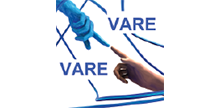A case study on induced maintenance using Unity and Vuforia
- a b c d e f g School of reliability and systems engineering, Beijing University of Aeronautics and Astronautics(BUAA), Beijing,100191,PR China
- a b c e f g State Key Laboratory of Virtual Reality Technology and System,Beijing,100191,PR China.
Cite as
Y. Xiao, C. Lv, J. Geng, M. Li, J. Yan, R. Wang, C. Guo (2018). A case study on induced maintenance using Unity and Vuforia7. Proceedings of the 4th International Conference of The Virtual And Augmented Reality In Education (VARE 2018), pp. 52-56. DOI: https://doi.org/10.46354/i3m.2018.vare.009
Abstract
The maintenance process is becoming more and more complex due to the complexity of equipment. As a
result, maintenance operation time rises and so does error operation rate, which also makes maintenance
manuals difficult to write and read. Therefore, induced maintenance rises as there’s a need for more reliable
ways to reduce the error rate of maintenance personnel, more convenient ways to check the maintenance
manuals, and more efficient ways to carry out the maintenance operation. Induced maintenance, by using
augmented reality equipment, allows maintenance personnel to receive accurate operational guidance,
visual and auditory, overlaid on maintenance object at each step in real time. In this paper, we display a initial
induced maintenance case study on augmented reality, using AR software Vuforia7 and unity 2017.3, design
and implement a complete maintenance process for a computer cooling fan
References
- Palmarini R, Erkoyuncu J A, Roy R, et al. 2018. A systematic review of augmented reality
applications in maintenance. Robotics and Computer-Integrated Manufacturing, 49,215-228. - Henderson S J, Feiner S, 2009. Evaluating the benefits of augmented reality for task localization in
maintenance of an armored personnel carrier turret. IEEE, 135-144. - Reinhart G, Patron C, 2003. Integrating Augmented Reality in the Assembly Domain - Fundamentals,
Benefits and Applications. CIRP Annals - Manufacturing Technology, 52(1),5-8. - Erol A, Bebis G, Nicolescu M, et al, 2007.Vision Based Hand Pose Estimation: A Review. Computer
Vision & Image Understanding, 108(1–2), 52-73. - Wu, H.-., Lee, S.W.-., Chang, H.-. & Liang, J.-. 2013, "Current status, opportunities and challenges of
augmented reality in education", Computers and Education, 62, pp. 41-49.
